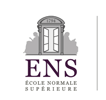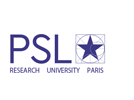Abstract
In the 19th century, the art scene in the Baltic provinces and their largest city, Riga, was fairly undeveloped: it was impossible to acquire good arts education, the art market practically did not existed and only a comparatively small number of artists educated outside of the Baltics were working there. The local art scene became significantly more active after 1870, when the Riga Art Society was established. In 1898, Society opened its Art Salon, which held several solo exhibitions of women artists and at least two group shows where all of the participants were women: the exhibition of works by six young women artists from Riga in 1901 and the exhibition of works by the former students of the drawing school of Elise von Jung-Stilling, organised after her death in 1904.
Recommended Citation
Vanaga, Baiba. "The Exhibition of Former Students of the Elise von Jung-Stilling Drawing School in Riga in 1904." Artl@s Bulletin 8, no. 1 (2019): Article 6.






